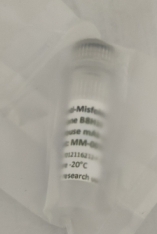 首页>
生物试剂
首页>
生物试剂
商家描述
产品评价(0)
Target
Rho-Guanine Exchange Factor
Target background
The human Rho guanine nucleotide exchange factor (RGNEF) is a homolog of mouse p190RhoGEF that has been recently identified as a novel human NFL mRNA binding protein in Amyotrophic Lateral Sclerosis (ALS) affected spinal cords. ALS - also known as Charcot's Disease, Lou Gehrig's disease and Motor Neuron Disease – is a rapidly progressive, and fatal, neuromuscular disease characterized by the gradual degeneration and death of motor neurons in the brain and spinal cord, which lead to progressive paralysis of the muscles.
Target alias
RGNEF
Immunogen
Peptide within the RNA binding domain of RNEGF
Specificity
The antibody recognizes a sequence on the RNA binding domain of human Rho-Guanine Nucleotide Exchange Factor (RGNEF) isoforms A and B. Competition test were done with a blocking peptide identical to the one used during immunization
Clone ID
---
Preservative
None
Format
Immunogen affinity purified, stored in PBS pH7.4 and lyophilized.
Recommend starting dilution
If reconstituted with deionized water in 100 µl: IP: 1ug/ml, IF: 1:100, IHC: 1:100-1:500. Optimal dilution has to be determined by the user.
Limitations
Research Use Only
Storage
Lyophilized antibodies can be kept at 4ºC for up to 3 months and should be kept at -20ºC for long-term storage (2 years). To avoid freeze-thaw cycles, reconstituted antibodies should be aliquoted before freezing for long-term (1 year) storage (-80ºC) or kept at 4ºC for short-term usage (2 months). For maximum recovery of product, centrifuge the original vial prior to removing the cap. Further dilutions can be made with the assay buffer. After the maximum long-term storage period (2 years lyophilized or 1 year reconstituted) antibodies should be tested in your assay with a standard sample to verify if you have noticed any decrease in their efficacy. To limit antibody loss or degradation, BSA (final concentration 1%) and sodium azide (final concentration 0.02%) can be added to the suggested first dilution. It is important to first verify if those preservatives are compatible with your assay.
 会员登录
会员登录.getTime()%>)
 购物车()
购物车()

 成功收藏产品
成功收藏产品